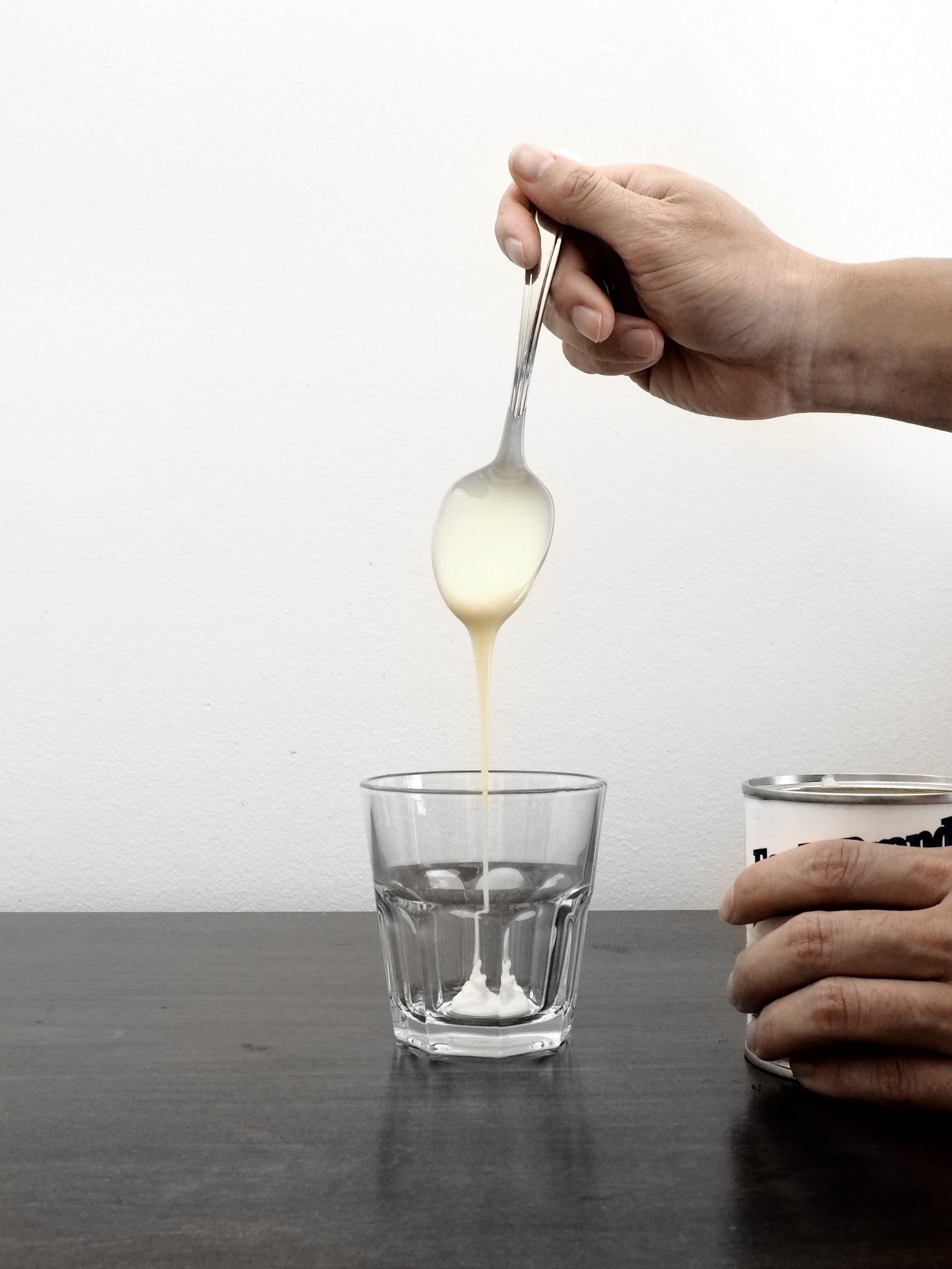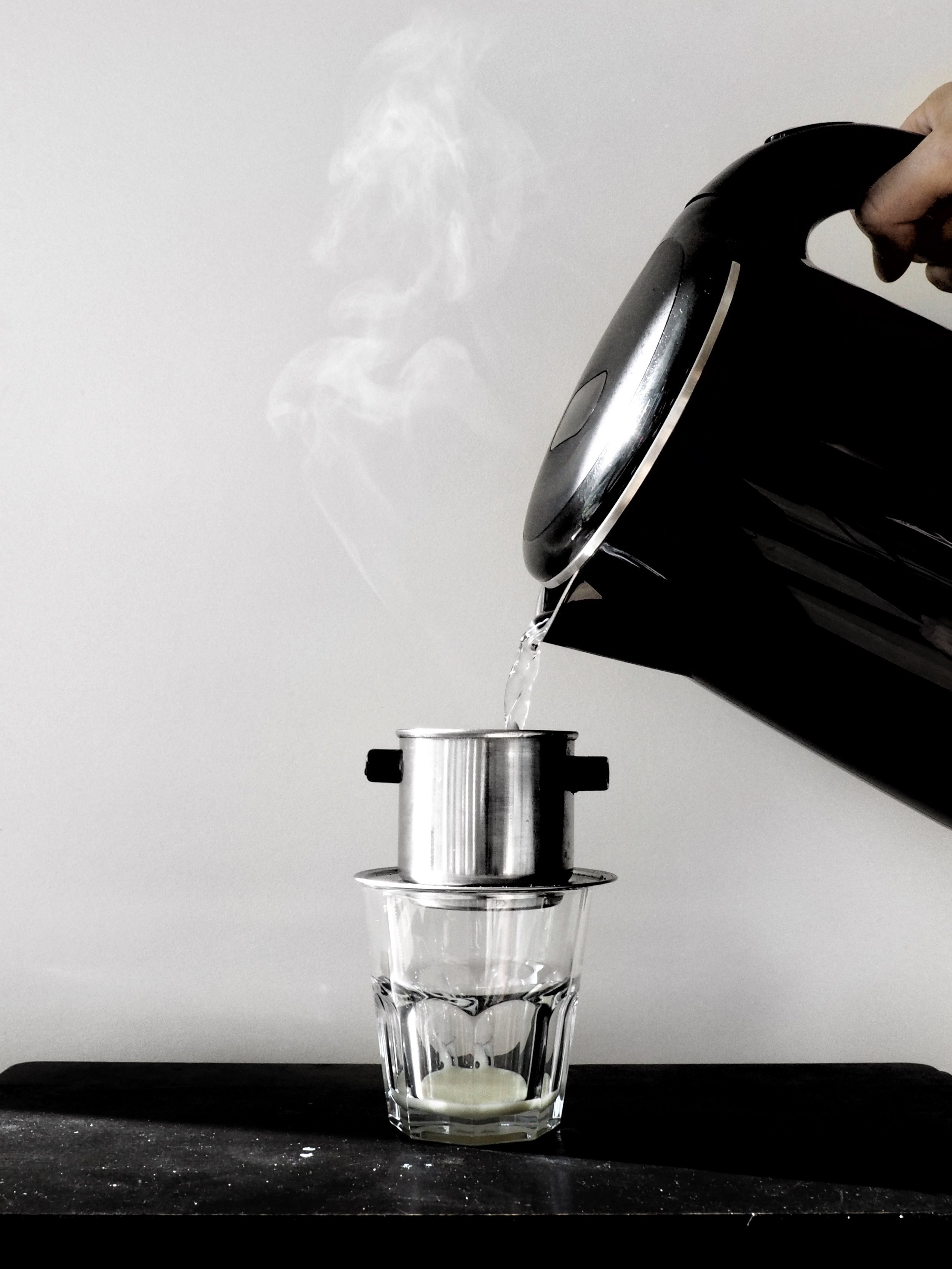Coffee Ex Machina
We’re coffee snobs at The 3 Spoons. In only the most dire circumstance will mere chain coffee do; and perish the thought of coffee at the press of a button. So, it shouldn’t surprise you, then, that we’ve gathered a few coffee gadgets over the years. A French press, pour-over, Aeropress, espresso maker, Turkish pot, and Vietnamese drip all vie for precious cupboard and countertop space.
It’s a little ridiculous, especially for a household of just two. Perhaps it’s time to declutter my life and kitchen - to somehow choose the ‘right’ machines to fit my tastes. Or, at the very least, understand why I need six different coffee preparations at my disposal.
For questions like this, there’s only one way to come to a decision: through empirical evidence. For this kitchen experiment, I’ll be tasting my way through one batch of freshly roasted beans for each of the six methods. Feel free to follow along; I’ve included all of my recipes below.
The Preparations
The Method
I started with whole beans from Toronto’s Green Beanery. It’s a medium-dark roast from the Marcala region in Honduras that we picked up specifically because I haven’t tasted this blend or roaster. I also ignored the bean’s tasting notes until after preparing and testing all of the methods to avoid biased impressions; my only ask was for a medium roast. I’ll reveal the roaster’s tasting notes at the very end.
All of the beans were ground using a Hario Mini Mill. It’s a hand grinder with a ceramic conical burr set, meaning it will provide an even grind with very little variability in size. I find it the best bang-for-buck grinder of this calibre without paying for an electric machine; the trade-off in cost savings is a little bit of elbow grease. Twisting a notched wheel on the bottom adjusts its grind size, which I’ll be noting down for each recipe.
I also used a portable electronic scale for accurate dosages. Much like using flour in baking, volume measurements - such as teaspoons and tablespoons - can vary wildly based on grind size and how much is packed into each scoop. It’s all done in the name of repeatable results.
Finally, all of the cups were tasted black to allow for the most ‘pure’ taste. True coffee snobs might tell you black is the only way to drink your coffee. We say drink it how you like it. Just know that it’s possible to mask the full range of flavours in your cup with milk and sugar; adulterating a cup of single-origin roast could be analogous to putting a good single malt scotch on ice. But that’s for another debate, and issue, entirely.
The Madness
French Press
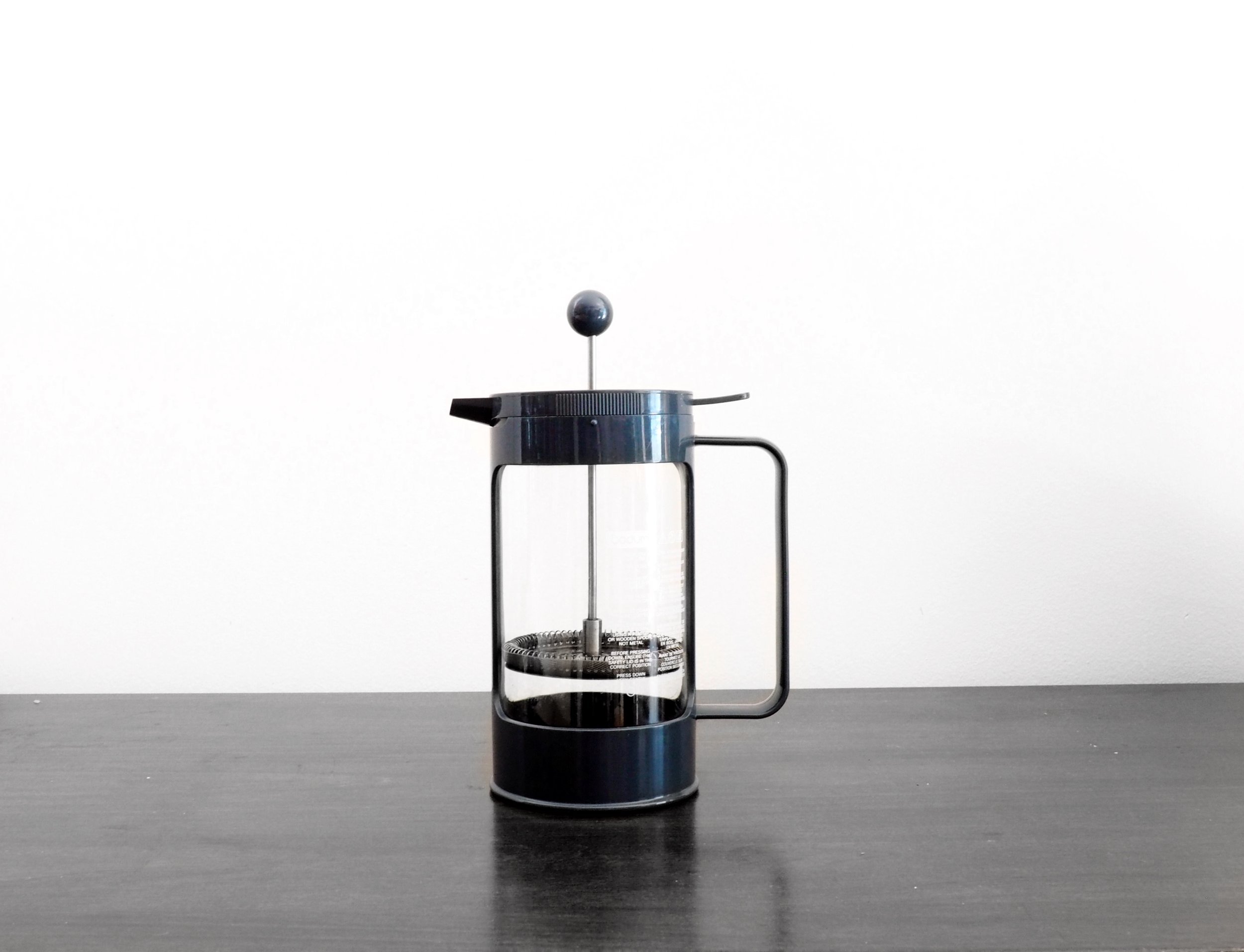
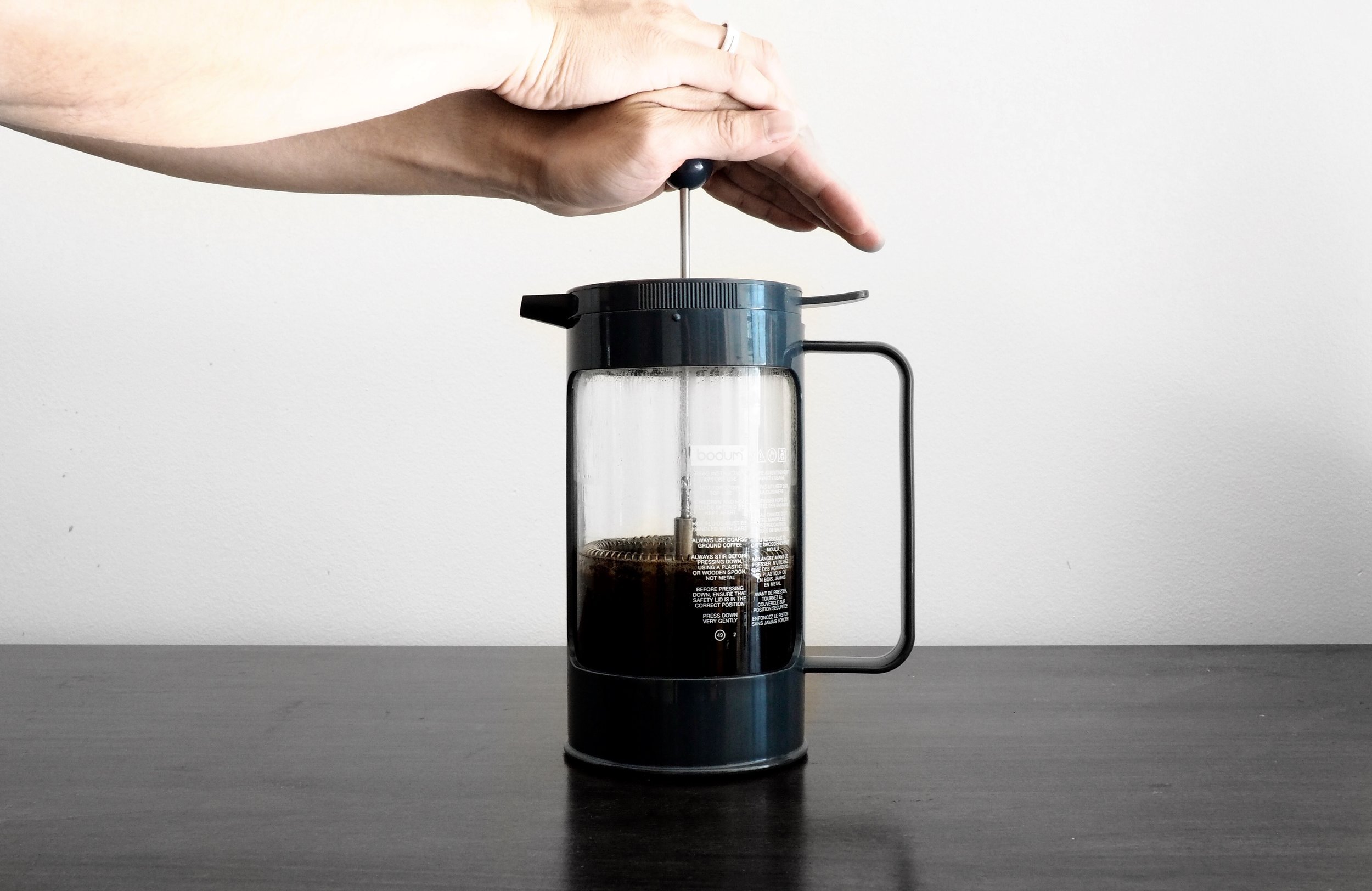
Recipe
Grind: Coarse (15 notches on the Hario Mini Mill, or HMM)
Dose: 15g
Water: 275ml, 98C
Brew Time: 4 minutes
Pour grinds into bottom of French press, add water. Stir with wooden spoon or chopstick. Brew for 4 minutes. Slowly press plunger down
The venerable French press is a staple on kitchen counters, and for good reason; a decent French press can be found for as little as $10 and makes markedly good coffee. It’s fitting then, to start tastings with it to establish a baseline for what to expect.
My cup began with an open, roasted aroma on the nose. There was a faint sweetness that I could detect, but it wasn’t enough to discern any nosing notes beyond ‘roasted’. The first sip revealed a whisper of bitterness - likely due to the bean’s oils at the top of the cup. Further sips lent a dark, nutty mouthfeel, followed by the slightest hint of brightness. It ended with a lingering dark, almost cocoa flavour. The exhale opened up the coffee, allowing more deep cocoa flavours to permeate the mouth and sinuses.
Pour-Over

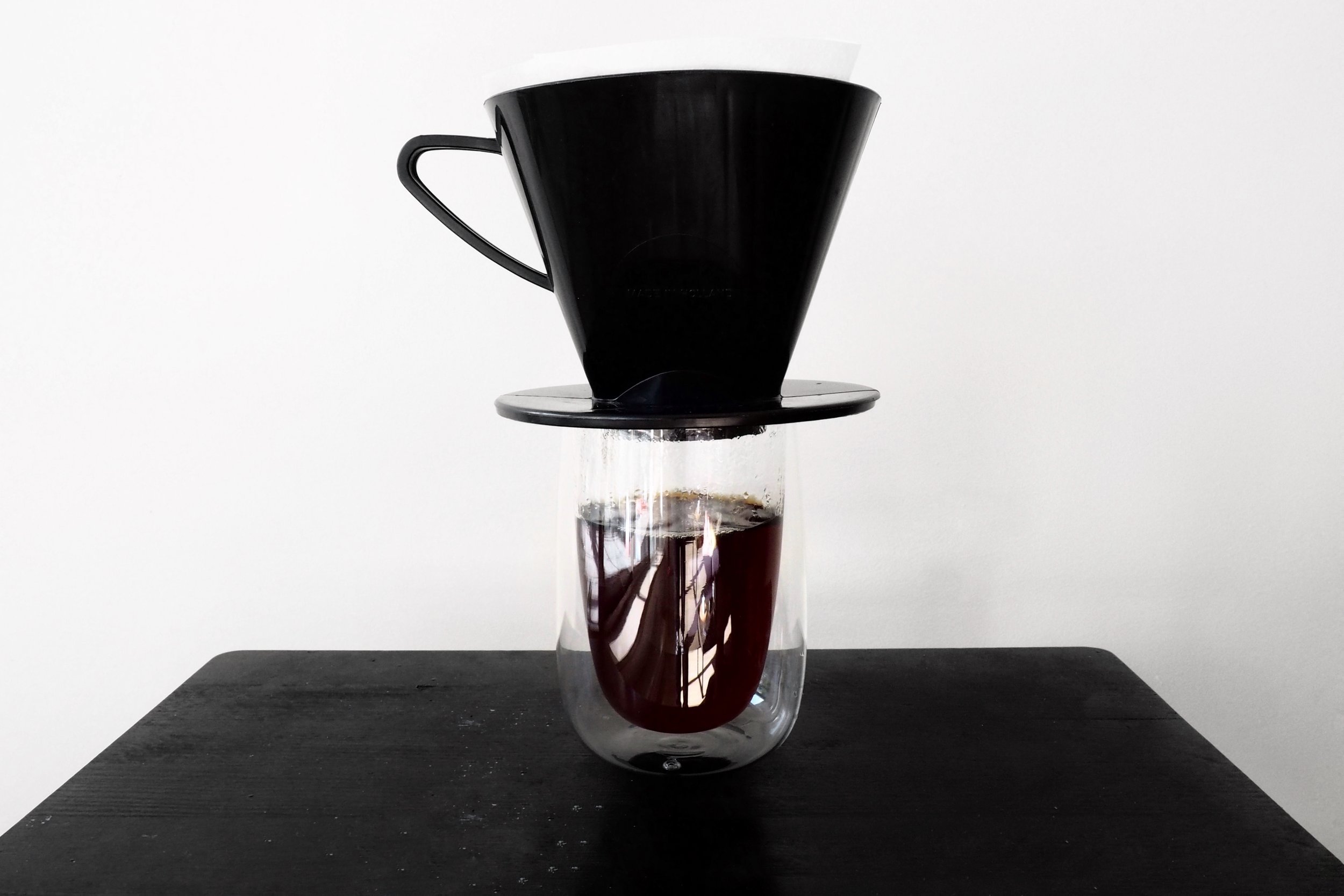
Recipe
Grind: Medium-fine (8 notches on the HMM)
Dose: 15g
Water: 250ml, 98C
Brew Time: ~3 minutes
Put paper filter into pour-over cone set over carafe or cup. Pour a small measure of hot water through the filter to wet and remove paper taste. Dispose of water in mug. Add ground beans, then wet with enough water to saturate and bloom the beans. Wait 10 seconds, then slowly pour remaining water over the grounds in a circular motion. Wait for water to fully drain.
This particular method holds the record for the most overlooked piece of equipment in my cupboard. Perhaps it’s the absolute simplicity of this little plastic cone. Or maybe it’s the pour-over’s similarity to the bane of my early coffee drinking experiences: the perculator. This was the method I was most interested to put to the test.
On the nose, the aroma from the cup presented with a bright, biscuit note. It’s especially interesting compared to the French press, whose aroma was decidedly more demure. The first sip hit the tongue with a nutty, nearly cookie, taste; it then faded into a dark cocoa bitterness that lingered on the outskirts of my perception. When the cup was set down for a while, this bitterness shifted into a subtle, tannic astringency similar to a peanut or hazelnut skin. On the exhale, I was able to pick up more of nutty notes; it’s a warm, lightly-toasted breath.
Coffee prepared this way has a much lighter body, but with a mouthfeel that still coats the entire palate. Interestingly, I was only able to perceive a mild amount of acidity halfway through the cup with a ludicrous amount of swishing across the flanks of my cheeks.
Aeropress
RECIPE
Grind: Medium-fine (8 notches on the HMM)
Dose: 15g
Water: 250ml, 98C
Brew Time: 1 minute, 15 seconds
Insert plunger and pull just to end of tube (setting 4). Stand Aeropress with opening facing up. Pour in ground beans, followed by enough water to bloom the beans. Stir with wooden spoon or chopstick. Fill to top with water. Wet paper filter, screw into lid. Brew 1:15, followed by a slow press into a cup.
This coffee contraption was created by the inventor who also made an aerodynamically optimized Frisbee; so it must make great coffee. But jokes were set aside after its debut at the World Barista Championship, where the geekiest of coffee snobs gave it their seal of approval. The original preparation claims to make a coffee close to espresso, but I used an inverted method that creates a more standard cup of coffee (gleaned from the 2014 winner of the World Aeropress Championship … yes, that’s a thing).
My cup from the Aeropress began with an aroma much like that of the French press; dark, cocoa notes swirled from the cup. The first sip was an exercise in depth, with a dark bitterness that faded after subsequent sips. There’s some light acidity, similar to the refreshing crunch from an asian pear, that appears in the middle of the swallow. Each sip ended in roasted nut and cocoa notes, with an exhale that left a now-familiar hazelnut astringency permeating my palate. The mouthfeel was that of silk, with a medium body similar to that of the French press.
Espresso
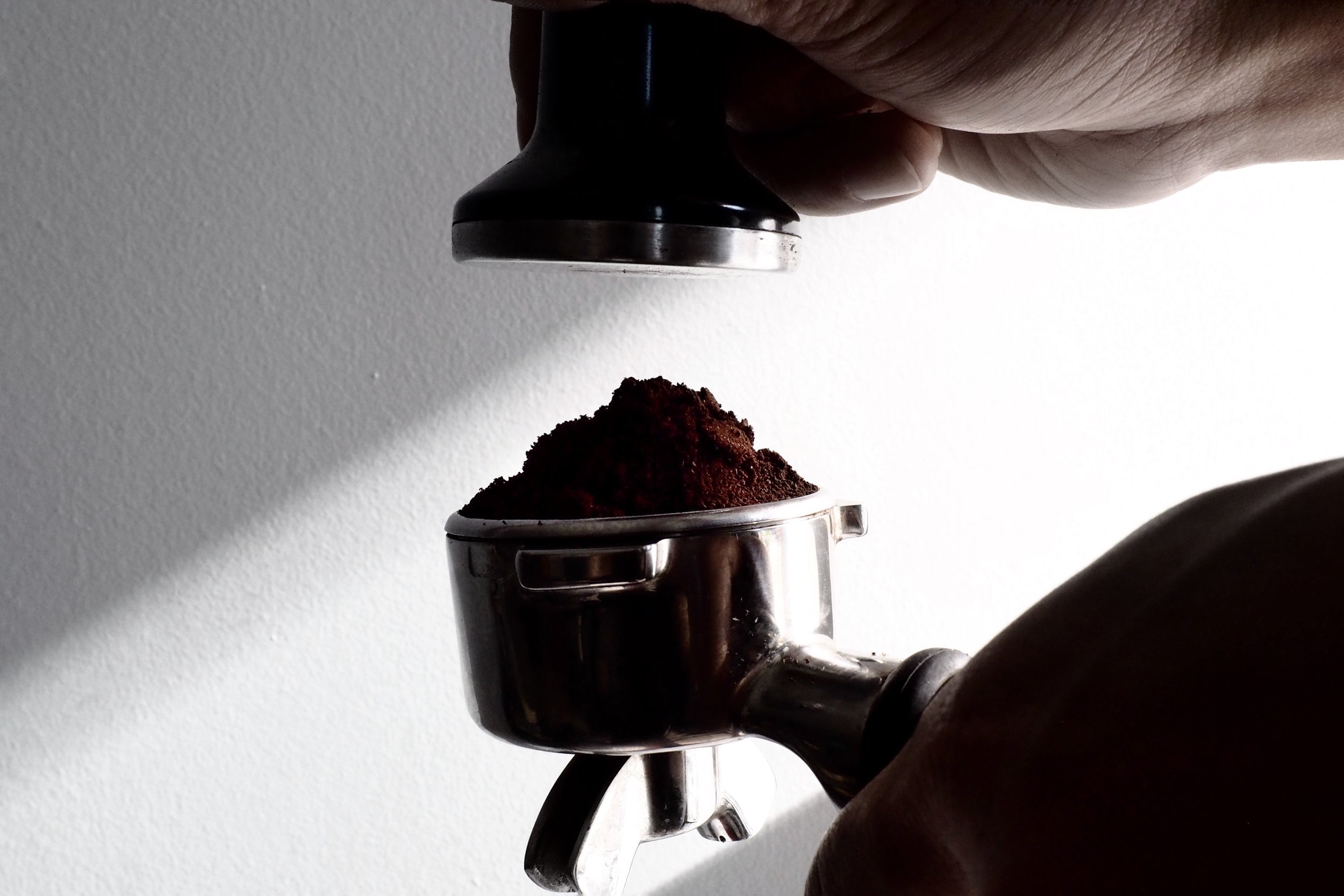
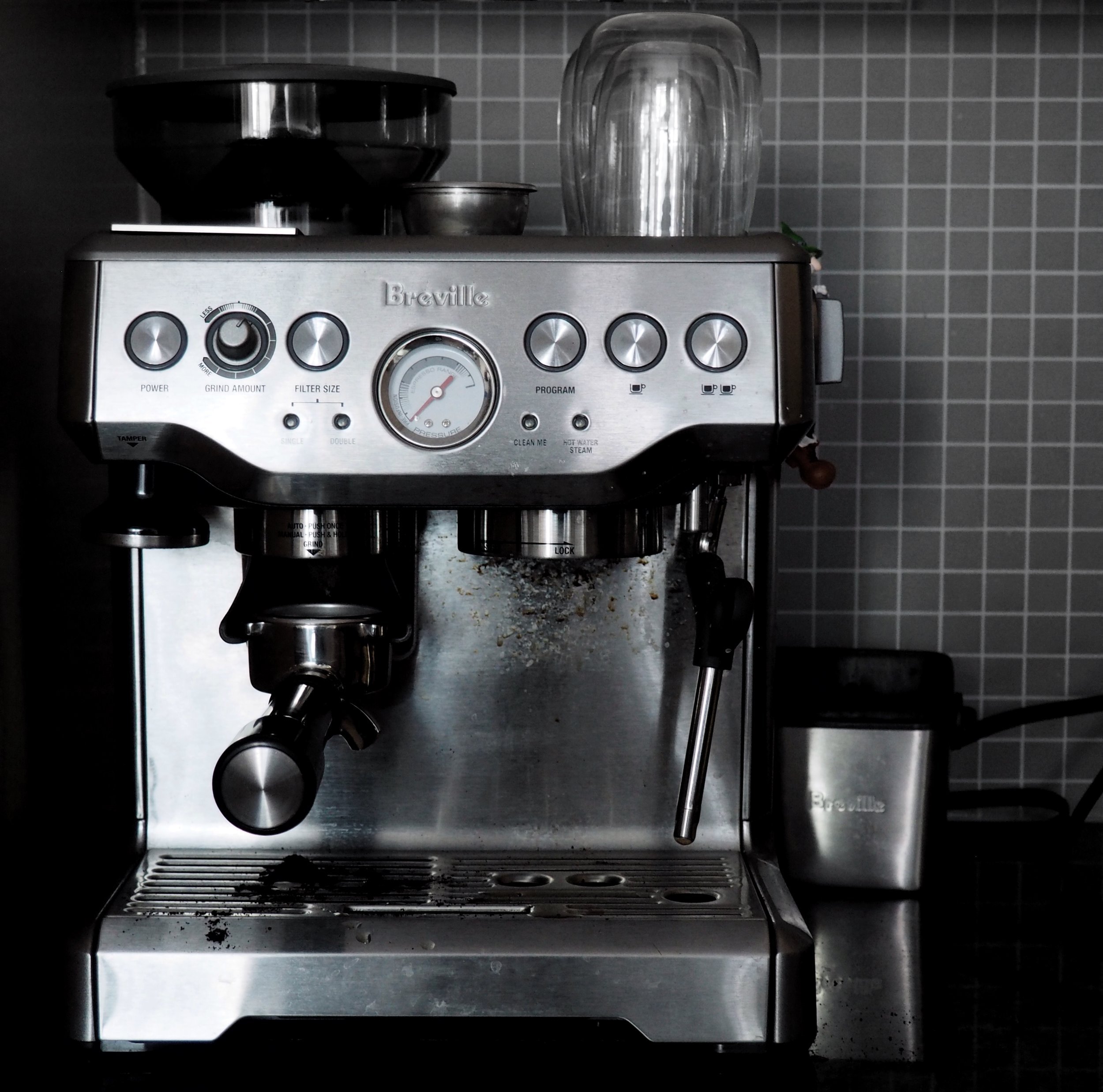
RECIPE
Grind: Fine (6 notches HMM)
Dose: 7g
Water: single shot, ~40ml
Brew Time: 4 minutes
Run water through grouphead to pre-heat espresso machine. Fill portafilter with grinds and tamp with 10-15 lbs of pressure. Fit portafilter into espresso machine, use single shot setting; shot should take between 20-30 seconds to pull.
Where French presses or pour-overs are the fixed-gear bicycles of the coffee world, espresso makers are motorcycles. The addition of gears, motors, and pressure can make for a thrilling ride … or coffee; but in untrained hands can end in disaster. I used a Breville Barista Express (BES870XL), capable of supplying hot water with 15 BAR of pressure. There’s also a built-in grinder, but I elected to dial-in the correct grind using the Mini Mill to keep comparisons more even. Speaking of disaster, I should add that I ruined a good 5 cups worth of coffee in the effort to pull the perfect shot of espresso.
In the end, my hard work was rewarded with a deep cinnamon spice on the nose, followed by citrus peel notes; it was the most intense aroma of my testings. Each sip began with crispy peanut undertones, followed immediately by fresh, green apple acidity. It then moved into a darker, nuttier flavour that ended with a lingering, pleasant bitterness. Finally, on the exhale I was left with a warm toasted nut note with a hazelnut astringency on the sides of my tongue.
Turkish

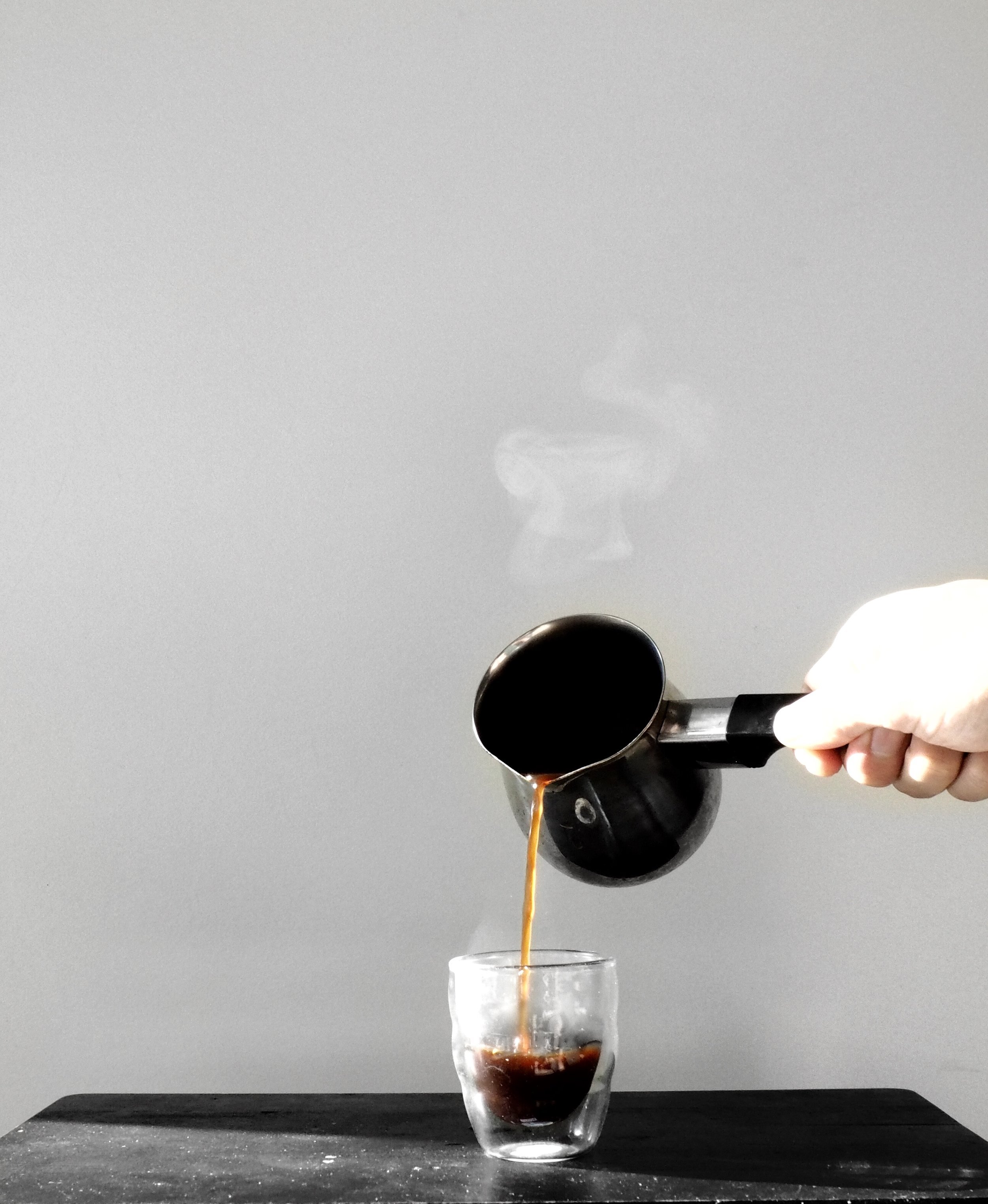
Recipe
Grind: Powder (1 notch on the HMM)
Dose: 15g
Water: 250ml
Brew Time: ~5 minutes
Fill Turkish coffee pot or small saucepan with cold water. Optionally, add sugar if desired. Sprinkle grinds overtop of the water. Do not stir; grinds should float at the top of the water. Place on burner on medium heat. Heat until the grinds start to foam, remove pot and reduce heat to low. Continue to simmer until grinds just finish sinking into the water. Serve.
This preparation method is commonly known as Turkish coffee, but there are myriad cultures from the hub between the Middle East and Eastern Europe that prepare coffee this way. I was first introduced to this style of coffee by family friends, who are of Bosnian descent. It was also what single handedly fueled my business school mornings, affectionately known as ‘Rocket Fuel’ by my friends. While traditionally served in small cups, a full mug of this coffee is more than welcome.
My cup of Turkish greeted me with a warm, toasted nut aroma. The first sip spoke of the darkest of cocoa with an unctuous, velvety mouthfeel. It was smooth and comforting (though beware, if you sip too greedily you’ll be left with a mouthful of mud). Following sips painted a lingering nuttiness across the palate, with an end that coated the mouth with cocoa-like tannins. The exhale filled the sinuses with the scent I’ve always attributed solely to Turkish-style coffee: an ethereal, near-indescribable toasted brown nut flavour. This cup had no acidic brightness present; it’s a baritone to the pour-over’s clear soprano.
Vietnamese (Phin)
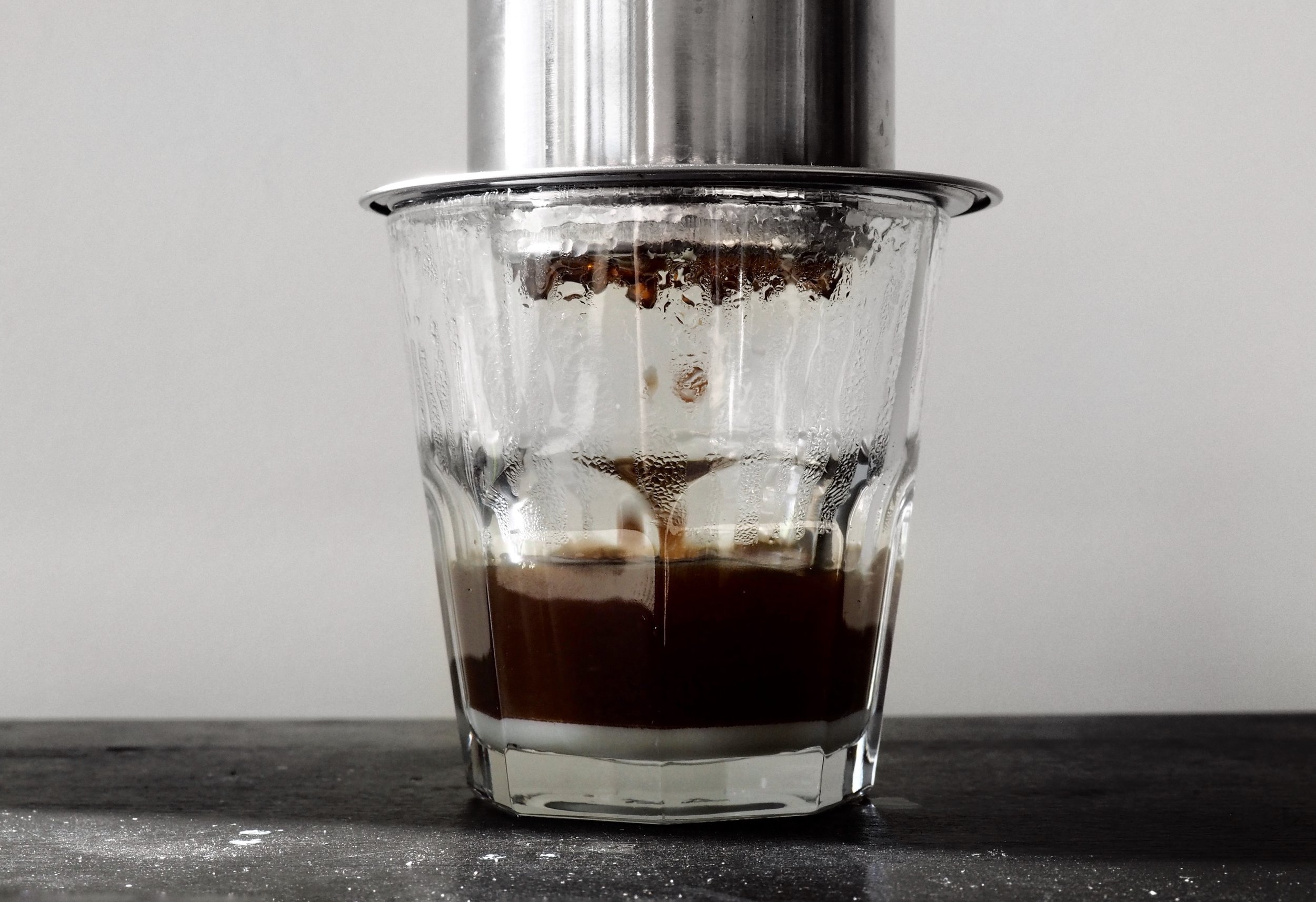
Recipe
Grind: Coarse (15 notches on the Hario Mini Mill, or HMM)
Dose: 12g
Water: ~100ml, 98C
Brew Time: ~4 minutes
Unscrew tamper insert, fill chamber with grounds. Screw or press tamper insert firmly into place. Place phin over cup (optionally, add condensed milk to cup). Pour small amount of water, ~20ml, onto grinds to bloom. Wait 20 seconds. Fill rest of chamber with water. Wait; coffee should slowly drip into cup. The process should take ~3-4 minutes. Serve.
Vietnamese coffee, served on ice with condensed milk, is a staple of Vietnamese restaurants around the city. Aficionados will claim that Cafe du Monde or Trung Nguyen are the only acceptable coffees for a truly authentic Viet coffee. A big reason for this is their addition chicory, the root of a dandelion family once used as a coffee substitute. Authenticity be damned; I tested this hot, black, and with the beans at hand.
My small cup of Viet coffee began with a well-defined medium-roasted note; it was the most pronounced of all the methods I sampled. Each sip gifted the tongue with mellow, robust bittersweetness. There’s some acidity to the end, but it’s tempered by a smooth mouthfeel. The exhale leaves burned caramel notes that interplay with lightly toasted nut. It’s perhaps one of the truest tastes to how the freshly ground beans smelled.
I would have been remiss if I didn’t try another cup with a tablespoon of sweetened condensed milk. The addition of sweet milk tempers much of the darker nuances in the cup, leaving a singular toasted nut taste throughout each sip.
The Finish
On Taste
We’ve all seen diagrams of our tongues outlining what area can taste sweet, salty, sour, and bitter. Turns out that’s not true at all; not only do we taste all flavours with our whole tongues, scientists also agree that umami - meaty savouriness - is a fifth taste. We also taste using our soft palate at the top of our mouths, as well as in the back of our throats.
I can sense a completely different range of flavours by holding something in my mouth and exhaling through my nose. Try it!
It’s entirely possible to come to this conclusion: they all smelled and tasted like coffee. But to do so would do a disservice to the nuances that each method presented. At the end of my tests, I looked up The Green Beanery’s own tasting notes online:
It has a nice spicy scent aroma with soft citrus. The flavor is mild and buttery with nutty tones, with herbal tints and light fruitiness. Medium brightness (acidity), medium body with a strong hazelnut aftertaste.
It dawned on me that choosing beans is like selecting music that best suits your mood, while method is the equipment and EQ settings. Some, like the French press or Turkish pot, pushed the coffee’s acidity to the fringes of the cup to highlight the cocoa depths of the beans. The pour-over’s product eschewed depth for clarity, highlighting top-notes of roasted nut and bright acidity. And then there’s the espresso, which yielded an intense shot with the most pronounced of aromas.
There is no ‘correct’ method to make coffee; rather, preparation is yet another layer to the near-infinite nuances that is the world of coffee. My own tests merely scratched the surface, leaving more questions than answers. What if I alter grind size for the Aeropress? Or water temperature in the French press? What effect does paper quality have in a pour-over? The questions compound even further with more complex methods, such as the espresso maker.
In the end, no one needs six different ways to make coffee. Yet, for someone simultaneously obsessed with detail and taste, the appeal cannot be denied. I, for one, might just start looking for method number seven.
Words by Nicholas Wong. Photos by Abhishek Dekate.
